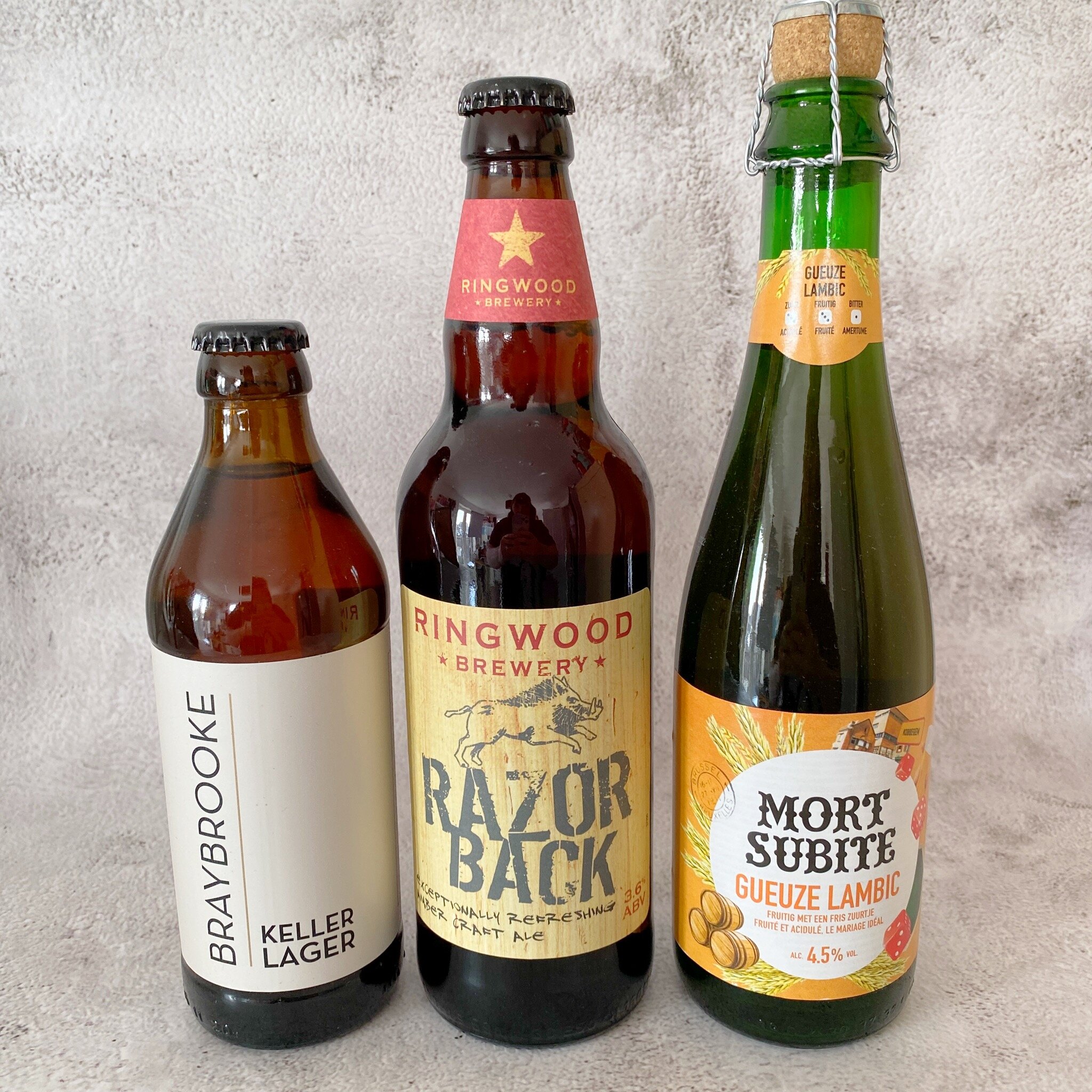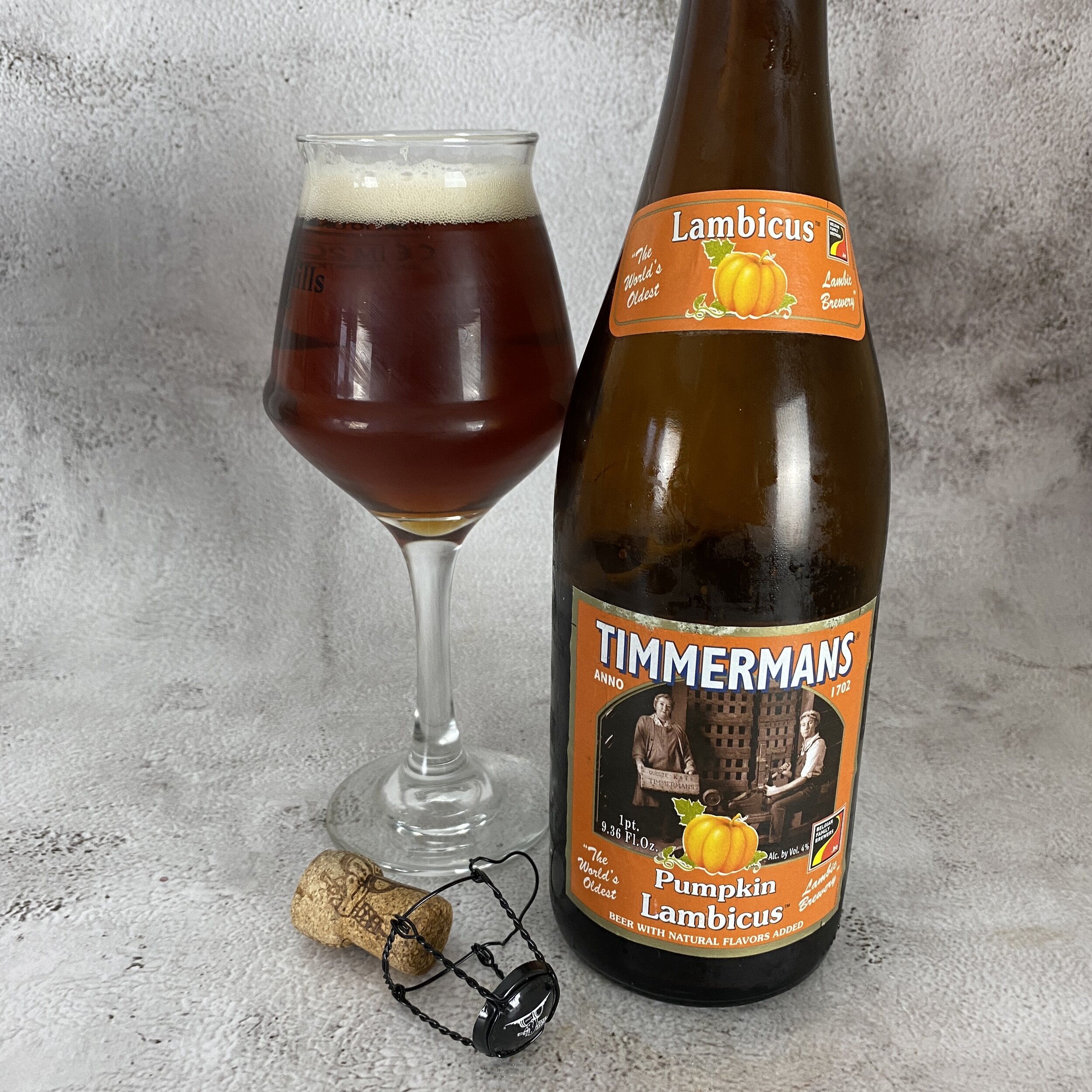What are the three main types of beer?
A lager, an ale and a lambic beer
We use lots of different terms for the beverage we call beer – ale, lager, real ale, craft beer, lambic, wild ale…. But what are the actual differences between these? Beer is a malt based beverage fermented with yeast or bacteria and can be categorised into three main types – lager, ale and lambic. These are defined by the type of yeast used to brew them. In this blog post we will look at these beer types, how they are brewed and why they are different from one another.
Ale
In the 15th century and the first half of the 16th century, ale was the staple drink of England. But beer was starting to come into the country from Germany and the lowlands. Water wasn’t safe to drink and milk was reserved for making butter or cheese outside of calving season, so ale brewed from barley was the main beverage of the people. It was sweet and flavoured with a mix of spices called gruit. Beer however, was made with hops making it strong and bitter. There are various reports that hops were banned by Henrry VIII and petitions were made to parliament to allow hops – but this just isn’t true. Ale brewers may have had restrictions placed on them to stop them adding hops to ale, but beer brewers were also around at the same time.
An ale - Wychwood Hobgoblin in fermented with English ale yeast
Today however, ale and beer arguably mean the same thing. An ale uses ale yeast during fermentation. Brewers yeast, or saccharomyces cerevisiae, is a single celled organism that loves to eat fermentable sugars and produce carbon dioxide and alcohol. It is considered top fermenting, meaning it works at a higher temperature – between 16-20oC (60.8 – 68oF) During this process, ale yeast can also add fruity esters and spicy phenols to the final brew depending on the exact strain used. English ales, German Weissebier, Belgian Saisons and New England IPAs all have their own strain of yeast that add different characteristics to the final beer – but they are all ales. The debate between real ale and craft beer rages on, but essentially they are the same thing.
Lager
Braybrooke Dunkle - brewed with lager yeast
Crisp, clean lagers on the other hand, use a different type of yeast. Saccharomyces Pastorianus is used in lagers and ferments more cleanly – meaning it doesn’t add fruitiness or spiciness. This is how brewers produce the crisp, refreshing lagers we know and love. Saccharomyces Pastorianus is a bottom fermenting yeast, meaning it works at lower temperatures – 7-13 oC (44.6-55.4oF) and takes longer to fully ferment. The word lager (or lagern in German) actually means ‘to store’. You can actually lager any beer – it just means storing it at very low temperatures, but it is an essential step in the process of producing a lager as it allows the yeast to do its thing and the beer to brighten as unwanted solids precipitate out of the final beer. In Germany beer would have been stored in cool caves or with blocks of ice cut from lakes and rivers in the winter. The beer was stored in these conditions for a long time, allowing the lagering process to take place. In commercial processes today this can be achieved much more quickly of course!
So a lager is still a beer, it just uses a different yeast, meaning it’s not an ale.
Lambic
Pumpkin Lambic from Timmermans
Beer can also be fermented with wild yeast or bacteria. This can be intentionally added or, in the case of spontaneous fermentation, allowed to inoculate the beer from the air.
Lambic is a style of beer that has been brewed in the Pajottenland region of Belgium since the 13th century. Rather than adding a carefully selected yeast strain to the wort, brewers place the liquid in open vats and allow the naturally occurring yeast in the air to spontaneously ferment it. This is then stored in casks and blends of 1, 2 and 3 year old lambics are mixed to create the final product. Fruit can also be added to the beer, bringing it’s own elements. Brettanomyces, a wild yeast, lives on the skin of fruit and can add a funky, barnyard bite to the final beer. This strain has also been cultivated and can be added to beer in a more controlled manner today. Bacteria may also add to the beer – lactobacillus can add sourness through the production of lactic acid and aceobacter adds acetic acid for vinegar type flavours and aromas.
Lambic served from a jug at Cantillion in Brussels
It is an unpredictable process and takes skill to produce consistent lambic beer. Much like Champagne, actual lambic can only be called lambic if it is brewed in the Pajottenland region. All others are merely lambic-style! This is also why the term ‘wild ale’ is used by many brewers to differentiate a beer that uses wild yeasts and bacteria from their local areas. Modern brewers are also using mixed fermentation – but we’ll leave that for another post!
The three types of beer
As you can see, beer is beer, but ale, lager and lambic are something else! Essentially, a beer is a beverage brewed using malt, but the yeast (or bacteria) used to ferment it makes a difference not only to the style but also the brewing process. This can produce ale, lager or lambic depending on whether the brewer uses ale yeast, lager yeast or spontaneous fermentation.
At the end of the day good beer is good beer – drink what you enjoy. But also think about the art and science that goes into your glass to produce that delicious nectar you are tasting.





